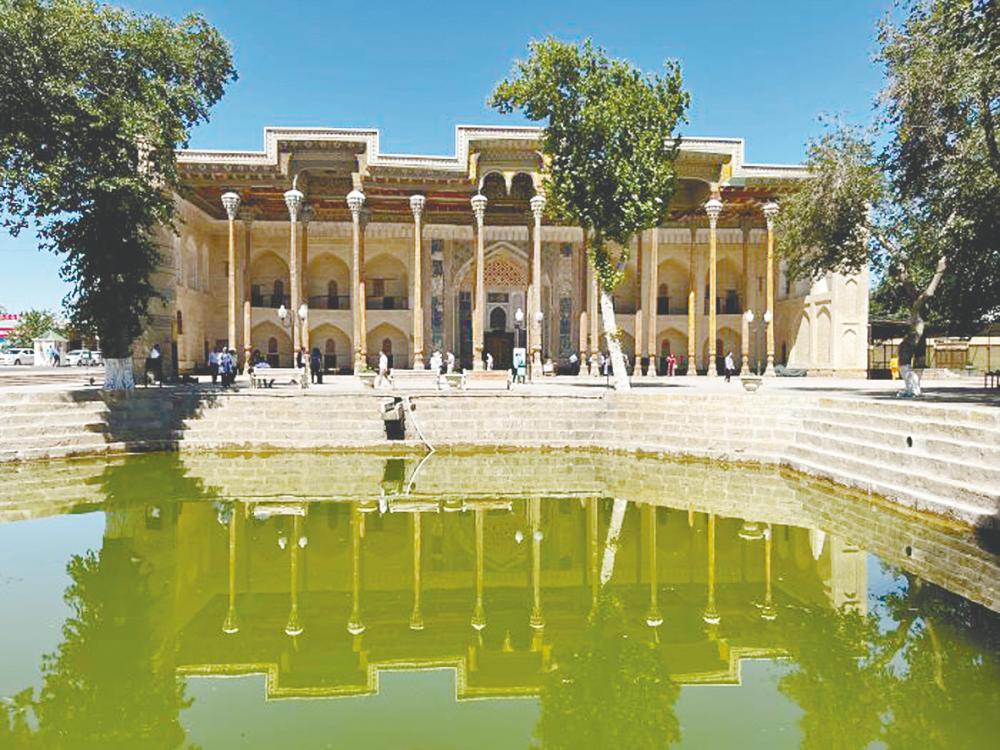BUKHARA was an important stop for traders and merchants on the ancient Silk Road. Located almost two hours by high-speed train from Samarkand, Uzbekistan, this ancient city rose from the swamp soil to become a key hub for the Islamic religion, in particular for Sufism.
The city has a completely different vibe to serene Samarkand as its medieval townscape transports visitors into a place where time has seemingly stood still. Bukhara is a prime example of a medieval Muslim city in Central Asia and it was listed on Unesco’s list of World Heritage Sites in 1993.
Much of Bukhara’s buildings feature designs and architecture that can be traced back Sheibanid dynasty, a Turko-Mongol monarchy descended from Genghis Khan in the 15th century.
On Unesco’s website, Bukhara is decribed as “the most complete and unspoiled example of a medieval Central Asian town that has preserved its urban fabric to the present day.” It was the largest centre for Muslim theology, particularly on Sufism, in the Near East, with over 200 mosques and more than 100 madrasahs, between the 9th and 16th century.

Iconic structure
The most iconic structure in Bukhara is the uniquely-designed Ark Citadel, a sprawling fortified royal palace situated on a 3.9ha land, including a registan or a sandy place, just in front of the ark.
Dating back to the 5th century, various powerful kingdoms took control of the ark, also known as the Ark of Bukhara.
According to legend, an Iranian prince Siyavush (or Siyawush) left his kingdom over conflict with his stepmother and sought asylum from its arch-enemy kingdom Turan, but he fell in love with a princess named Farangi.
To dissuade the prince, Turan’s King Afrasiyab gave an impossible task – to built a palace using an ox skin.
The clever prince tore the ox skin apart, made into a thin rope and tied the ends together to create a big circle and placed it on the land. He built the palace within the boundary of the circle, winning the princess’s hand.
Sadly, the prince was later killed by the same king and father-in-law, who turned jealous of his fame among his people and over allegation of a coup. Siyavush is buried under the eastern gate of the complex.
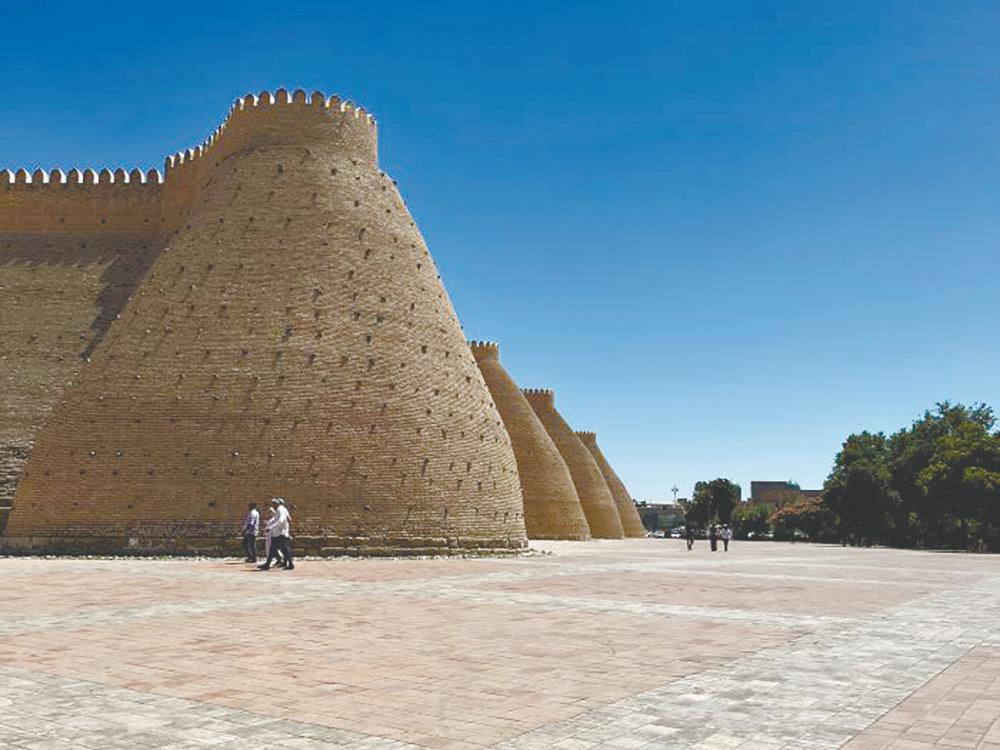
Red Army fortress
Initially, the ark was built with mud but eventually, it was destroyed and rebuilt over the centuries by different rulers or kingdoms. The Ark has a city within the enclosed high brick walls.
It was used a residential palace, an administrative centre and much later, as a fortress by the Red Army in 1920 during Russian civil war. Much was destroyed during the latter conflict but was restored with burnt bricks and walnut tree trunks to prevent from collapsing as it still stands, today.
The Ark has two gates, east and west gate, where the fortress entrance is situated in front of a Registan squares. At one time, royal families, prime minister, commanders and even servants lived inside the citadel and were forbidden to leave for fear having any contacts with enemies.
The arch portal or entrance is on a higher ground and right after the entrance, there are prison cells, where enemies were imprisoned by kings for various crimes.
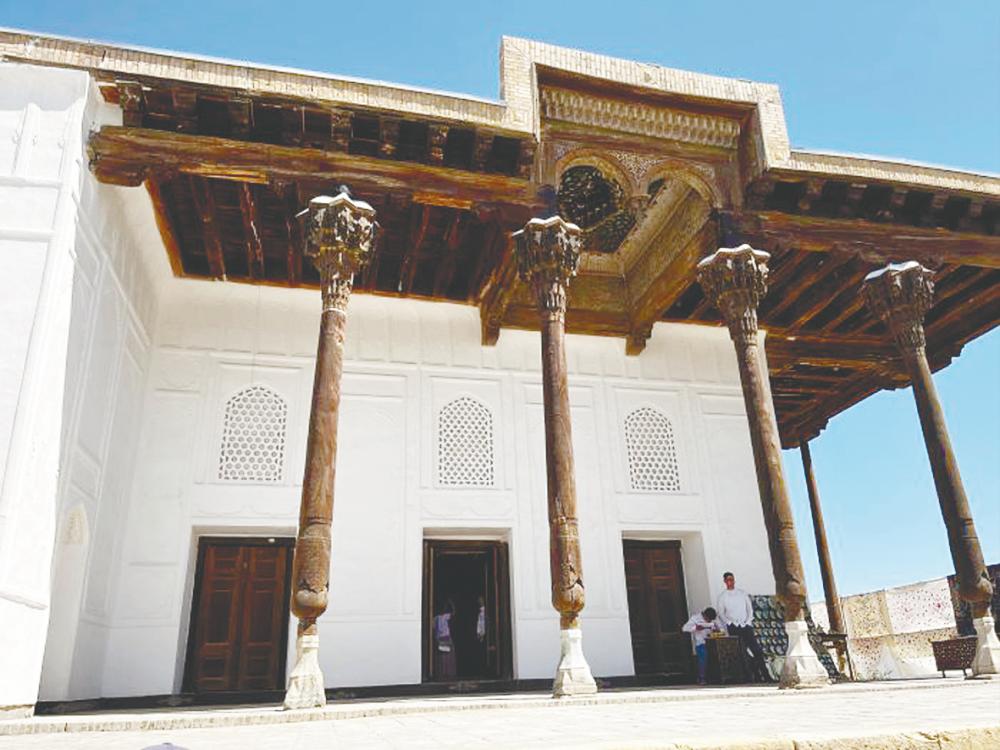
Inside, there is Djome Mosque, built in the 18th century during the reign on Subhan Kulikhan. There are a multitude of geometric and ornamental design on the ceiling, eight doors and four Mikrab that surround the mosque. The mosque exhibits one of the oldest pages from a Quran, dated to the 8th century.
Also on display are antique books and ancient works of art. Visitors will also see a horse stable on the upper level, rooms, stone alleys and an open-air Coronation Hall with an underground room for “khazanah” (property), which once stored gold and silver coins.
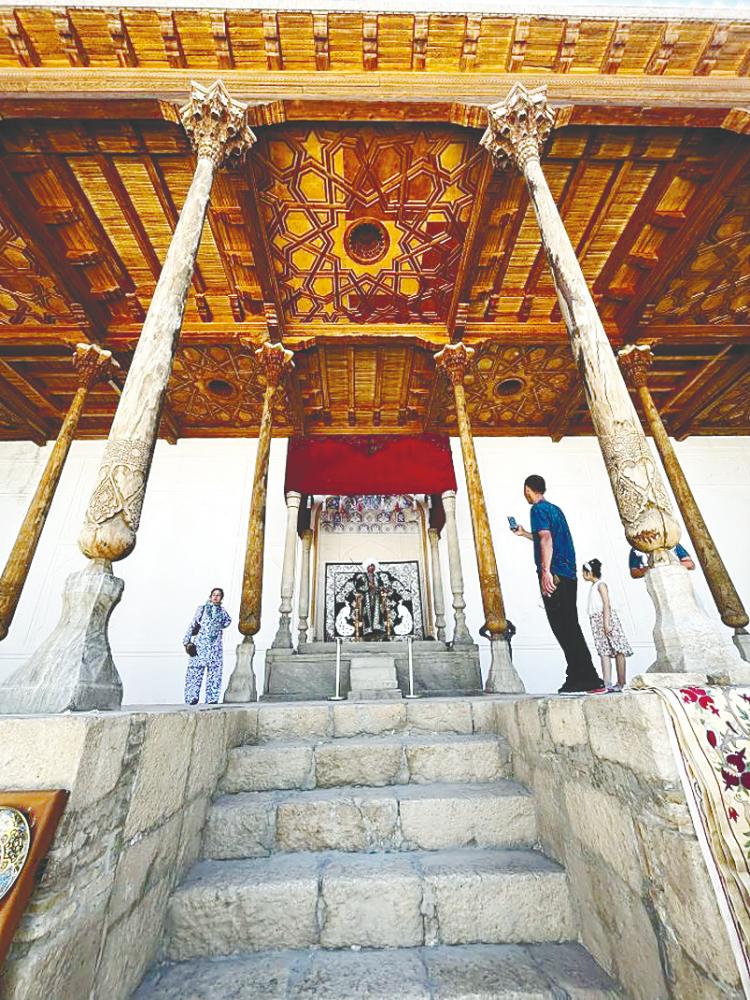
Coronation venue
As befitting a grand ancient city, Bukhara was the venue for many a-coronation.
During the coronation, the king would sit on a carpet with four corners, carried by four tribal leaders, followed by other tribals leaders (a total of 92 tribes) and placed on a marble throne as a mark of ascension to the throne.
The throne marble was made in 1669. The throne marble, placed on a raised floor , is surrounded by carved marble base wooden pillars and on top, there are designs on the wooden ceilings. Now, a throne chair with elaborate design is placed on the marble floor,
In the past, some coronation had taken place in secrecy, for fear of assasination of the newly crowned kings.
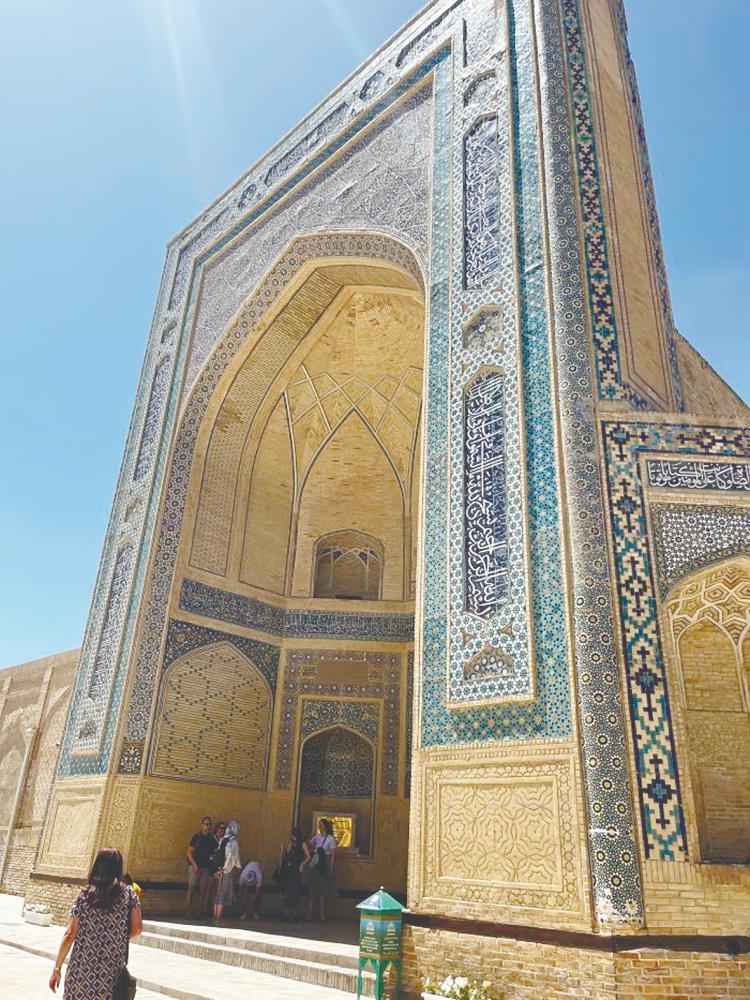
Inspired by the stars
The most unique feature of the ark are the distinctive seven pillars. The burnt brick exterior is elongated and protruding, outwards.
The last ruler was influenced by astrology and build the pillars on the ground to match a star constellation, the seven-pointed Ursa Major, in the sky.
The exterior walls had withstand sieges and even destroyed at some parts due to bomb attacks but now, it’s most instagrammable point due to its distinguished feature.
Just a walking distance away lies a palatial Poi Kalon complex, a Unesco World Heritage site comprising a mosque with two blue domes, madrasah with white and blue mosaic and tiles and the oldest minarets in Bukhara.
Poi Kalon means “at the foot of the great one”. The grand minaret built in 12th century is the oldest and a symbol of Bukhara, serving as a lighthouse for caravans as well as a watchtower over the city.
Pillars of strength
Another of Bukhara’s well known architectural wonders is the Boloi Hovuz.
The 17th-century building’s architecture is accentuated by a green pond, a bright arch entrance, and distinctive motifs on the wooden ceiling, Ayvan or Iwan, is the name for the verandah with beautiful patterns engraved on wooden columns.
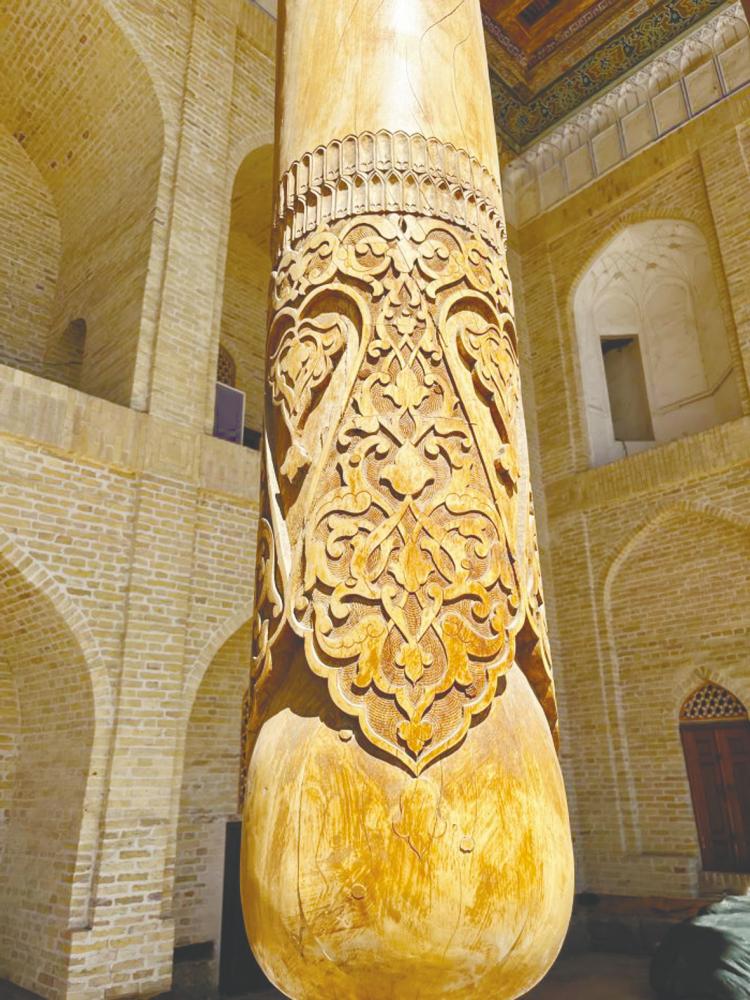
The centuries-old wooden pillars made from elm trees extend from the ceiling to the floor.
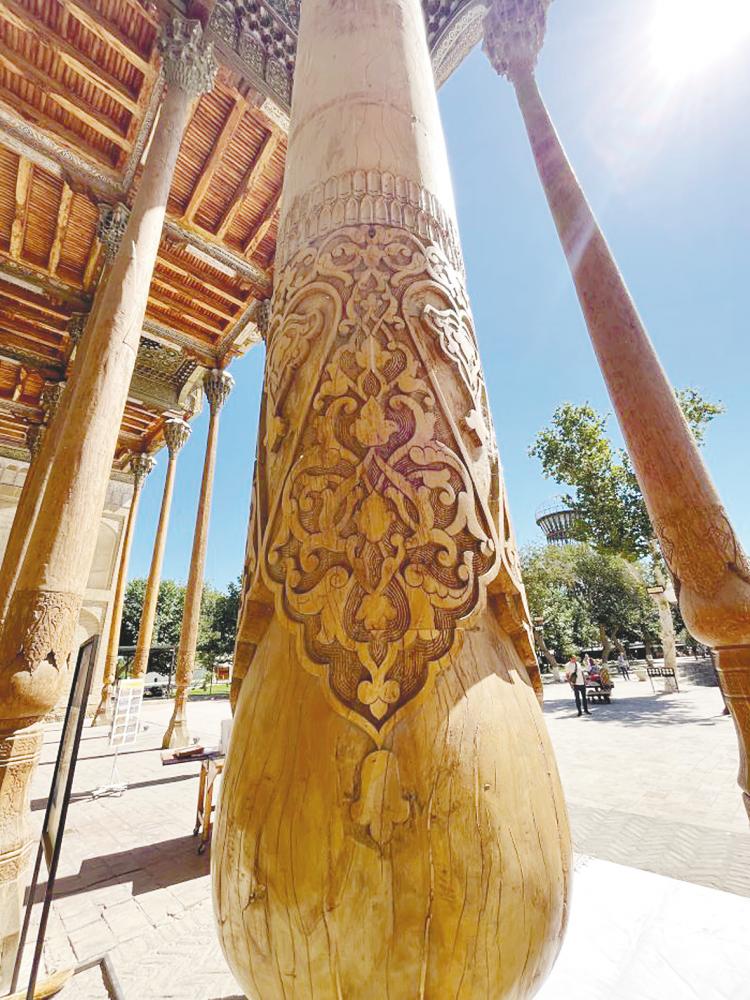
Mulberry or walnut trees are used for the pillar bases. There are plenty of black mulberry trees in places like Samarkand and Bukhara. Mulberry was chosen because it keeps the structure from collapsing from the bottom by absorbing moisture or salt from the surrounding swamp soil.
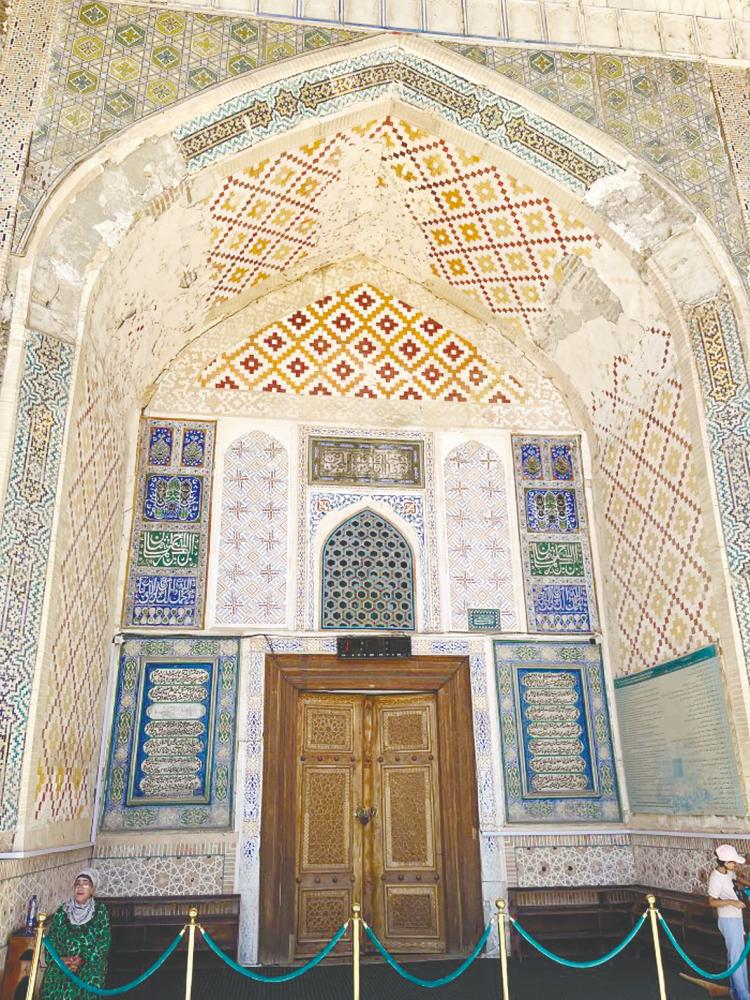
The public still gathers in Jame Mosque for Friday prayers, which was originally built for Kings of Bukhara. The land was once ruled by Khannate of Bukhara, between 16th to 18th century and Emirates of Bukhara, from 17th to 19th century.
There is a winter mosque behind and a minaret, which was constructed 200 years later, between 1916 to 1917.
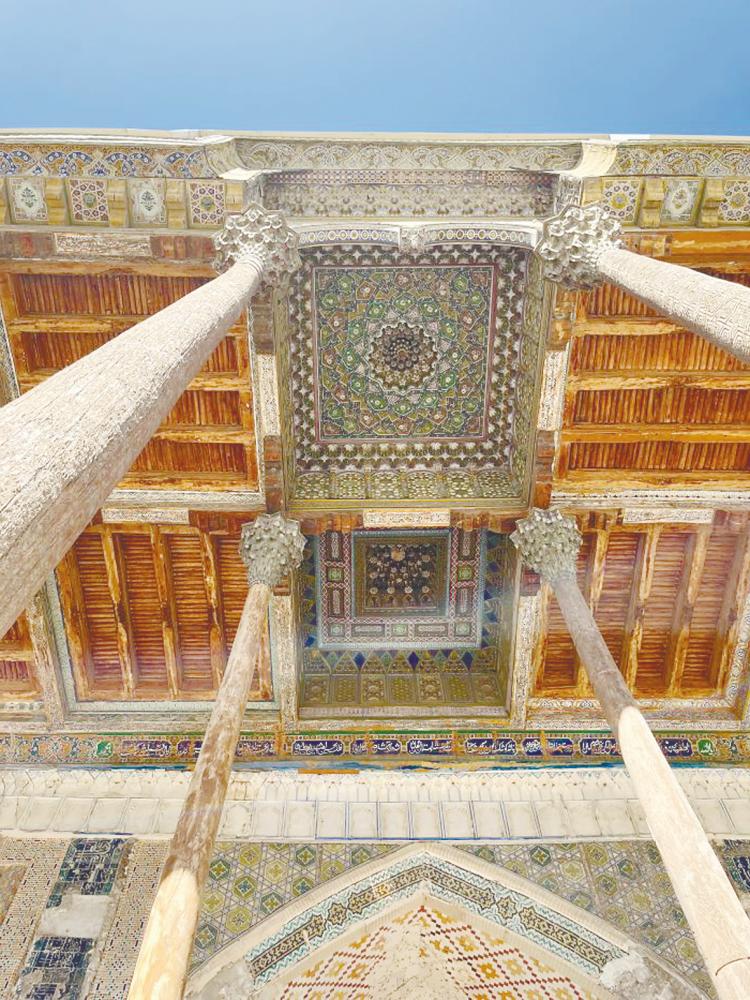
Boloi Hovuz, also known as Bolo Hauz, is named after the pond and it literally translates to “above the pool,“ but it is more often known as “40 Pillar Mosque,“ due to its reflections in the pond, which is located in front of the structure.
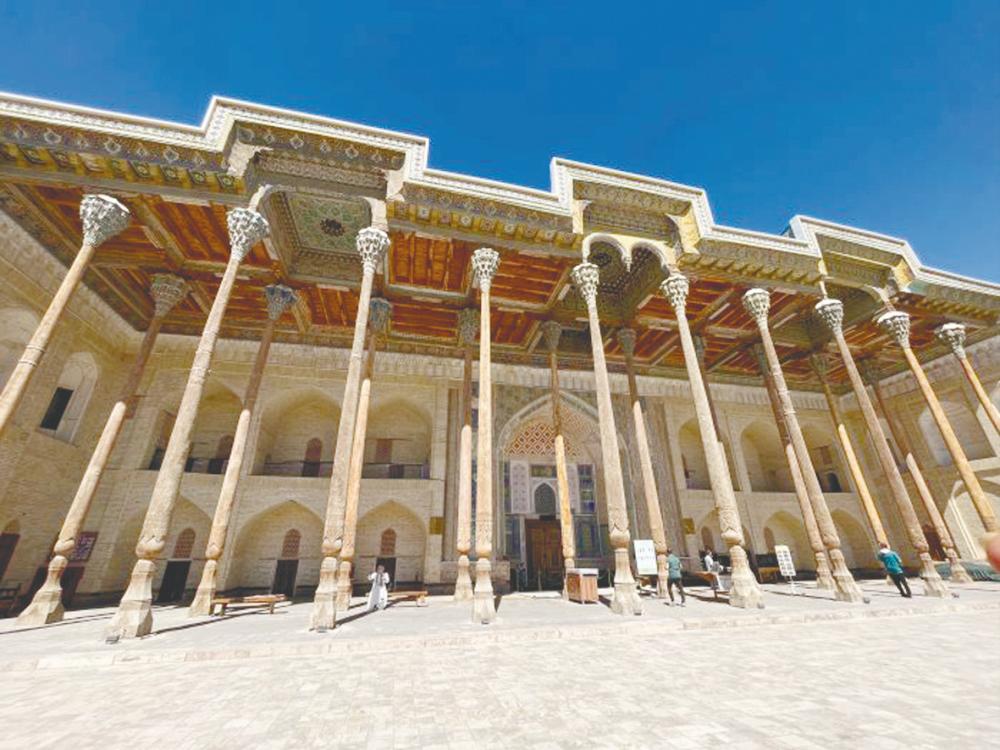
In Boloi Hovus, an artisans carved intricate flower pattern on brass plate using simple tools like chisel, showcasing his talent and skills, one of unique crafts, you can find in Bukhara. The handmade plates takes just days to make a piece and there are also vibrant coloured-ceramic plates, which makes a great souveniors.
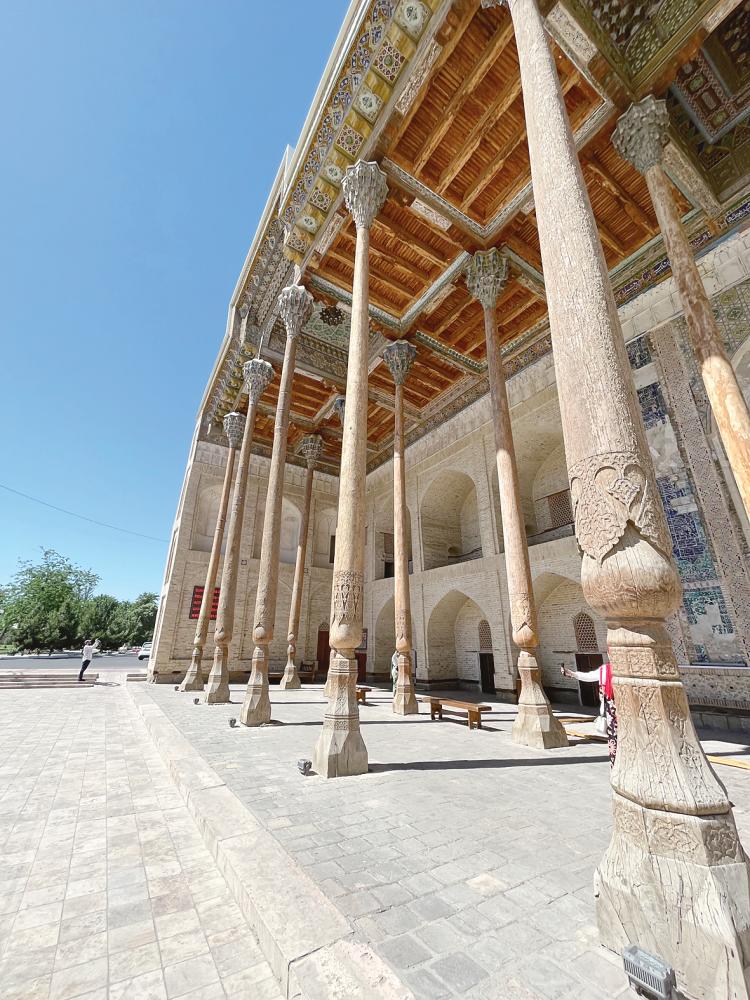
Alongside Samarkand, Bukhara is yet another architectural wonder in Uzbekistan that will fill visitors with awe.



